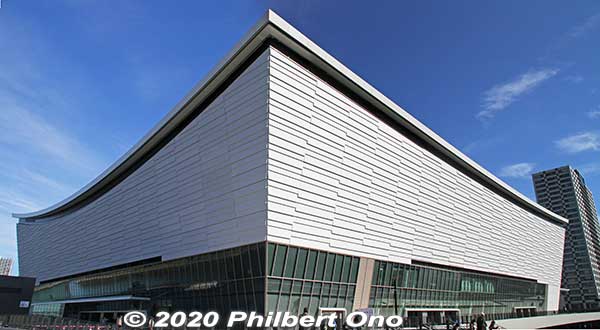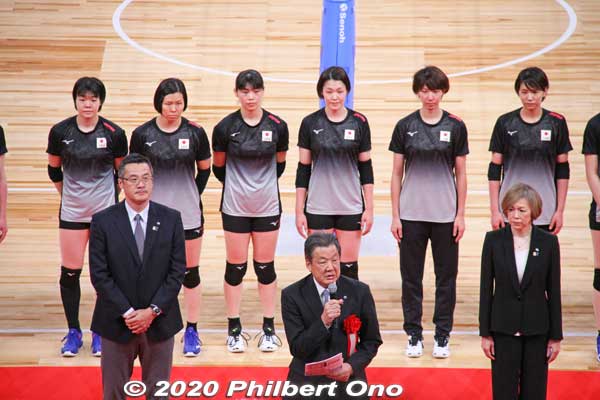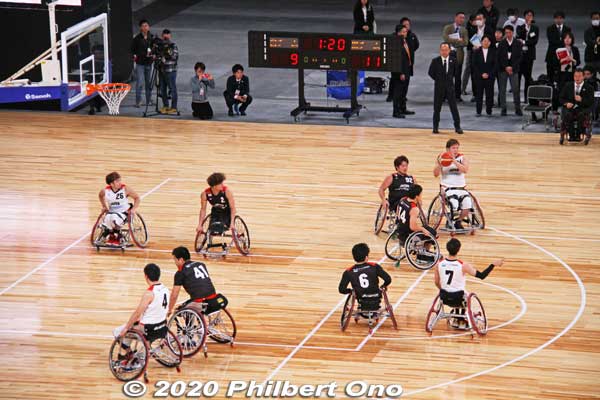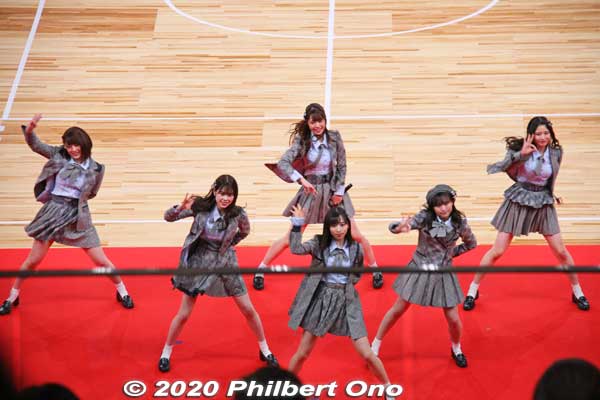
Ariake Arena in Koto Ward, Tokyo was completed in December 2019 and I attended the dedication ceremony held on Feb. 2, 2020. It will be the venue for Olympic volleyball and Paralympic wheelchair basketball. Arena capacity is about 15,000. They allowed only about 4,000 people to attend the ceremony that started at 10 am and ended at 12 noon.
The building is very modern looking and uses lots of wood (made in Japan) on the inside. It’s like the Olympic Stadium with so much wood. After the ceremony, we were allowed to tour the arena. We could go down to the courtside and also see the warm-up courts. The building has a concave roof to reduce space (and air-conditioning costs). After the Olympics, the arena will be used for concerts and a variety of events. 有明アリーナ完成披露式典
Ariake Arena is a short walk from Shin-Toyosu Station (Yurikamome Line). There are also buses from Tokyo Station Marunouchi South Exit (bound for Tokyo Big Sight) and from Monzen-Nakacho Station (Tozai subway line) bound for Tokyo Teleport station, get off at Ariake Shochu Gakko-mae bus stop. Note that buses might not run during the Games.















In the front row from right to left: Tokyo Governor Yuriko Koike, Takashi Yamamoto (TOCOG deputy secretary), Yasuhiro Yamashita (Japanese Olympic Committee Chairman and Olympic judo gold medalist at 1984 Los Angeles), Mitsunori Torihara (Japan Paralympic Committee Chairman), and Koto Ward Mayor Takaaki Yamazaki. The others are local Tokyo politicians.

Left to right: Seiko Hashimoto (Minister for the Tokyo Olympic and Paralympic Games), Daichi Suzuki (Japan Sports Agency Commissioner), Yusaku Morioka (Japan Sport Association Managing Director), Kenji Shimaoka (Japan Volleyball Association Chairman), and Toshihiko Tamagawa (Japan Wheelchair Basketball Federation Chairman).







After their volleyball demo (only by the women’s team), a short speech. Men’s coach on the left and women’s coach on the right. In the middle is Kenji Shimaoka, Japan Volleyball Association Chairman and Olympic volleyball gold medalist at the 1972 Munich Olympics.
The volleyball coach has to choose only 12 players for the Olympics. Such a hard decision, must be nerve-racking for the player candidates.



Backed by the national wheelchair basketball team, Toshihiko Tamagawa (Japan Wheelchair Basketball Federation Chairman) gives a short speech. Yes, wheelchair basketball will be held here during the Paralympics. I’m sure the national teams will do whatever is necessary to make it to Tokyo 2020.


Some entertainment by AKB48 Team 8, a Japanese pop idol group. I wonder why Team 8 have only six members. The arena’s sound system for them was pretty terrible. Maybe it was a makeshift sound system. After the Olympics, they plan to use the arena for concerts too, so I hope they will have a good sound system.






Official website: https://tokyo2020.org/en/games/venue/ariake-arena/